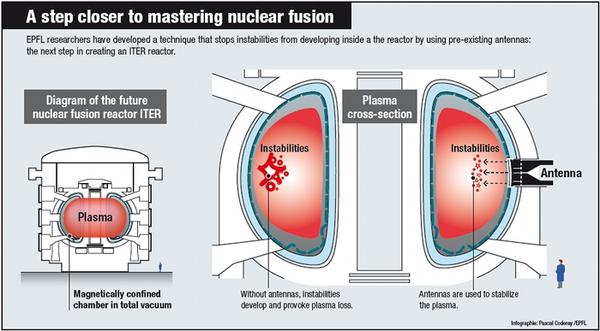Scientists have achieved a breakthrough in efforts to build the future nuclear fusion reactor ITER.
Fusion should be the future of every sane government's energy policy. Fusion is the most energy dense method of generating electricity we know. It is clean and does not emit any of the harmful, toxic carbon dioxide gases we sometimes hear about.
Nuclear fission, the type of nuclear power used today, occurs when atoms split apart to release energy, while nuclear fusion occurs when atomic nuclei fuse together to form heavier atomic nuclei, a process that occurs inside the Sun.
It is technically very complex and therefore difficult to replicate the processes that take place inside the Sun. The gases used to create the reactions are heated to millions of degrees, at which point they become a plasma. Instabilities appear in the plasma, which grow and make the plasma unstable, causing it to oscillate despite the presence of a magnetic field. If the oscillations become too strong, the plasma can touch the walls of the reactor. If that happens, the plasma will cool down quickly, fusion will stop, and the reactor may be damaged.
The challenge is to reduce instabilities deep inside the plasma so that they do not multiply, while at the same time allowing the reactor to continue functioning properly, and breakthroughs have been made in this area.
Jonathan Graves and his colleagues EPFL Lausanne By tuning antennas that emit powerful electromagnetic radiation, the Swiss researchers could quell instabilities in a gas plasma as soon as they appear. Their approach doesn't add any physical complexity to a reactor, as the antennas used to quell instabilities are the same ones used to heat the plasma in the first place.
The team tested their solution in the Joint European Torus, the largest nuclear reactor currently in use. The next step is to add a detection system that can automatically control instabilities in real time. If successful, these improvements will be added to the ITER reactor, currently under development in southern France.


